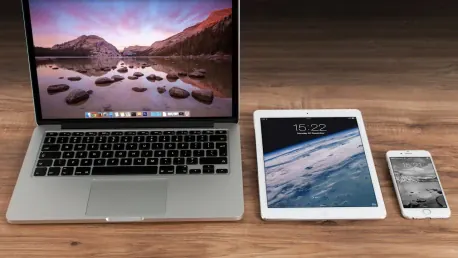As the competition between mobile operating systems Android and iOS continues to intensify, Google has introduced its version of Apple’s Handoff to a broader range of Android devices. This strategic move aims to enhance cross-device compatibility and synchronization, drawing direct parallels with Apple’s Handoff feature, which allows users to begin an activity on one device and seamlessly continue it on another. The seamless integration and real-time data sync across multiple devices would enable actions such as video call casting, internet sharing, and notification dismissal across different devices, fostering a more interconnected user experience within the Android ecosystem.
Enhancing Cross-Device Compatibility
Introducing Cross-Device Services on Android
The journey toward achieving seamless device integration on Android began with features like AirDrop on iOS, which set a high standard for file sharing that Google has aspired to match through its Quick Share functionalities. These efforts reached new heights with the introduction of cross-device services, making it possible to start an activity on one device and continue it on another without any disruption. This level of integration marks a significant evolution in the user experience, aligning more closely with what Apple users have enjoyed for years.
Initially, these features were limited to specific devices, particularly Google’s Pixel and Samsung models. The rollout of these capabilities started with basic functionalities such as notification dismissal synchronization across devices in September, gradually expanding to include more advanced features. These advanced functionalities were designed to enrich the user experience, allowing users to cast video calls to other devices and share internet connections seamlessly, much like the Auto Hotspot feature available on Samsung devices.
Google’s approach to expanding these capabilities has been strategic, ensuring that updates are pushed through Google Play Services rather than OS updates. This method minimizes the interference from device OEMs and guarantees a standardized user experience. By doing so, Google aims to ensure that its cross-device services are accessible and functional across a wider range of Android devices, promoting a more cohesive and integrated ecosystem.
Expanding Beyond Google’s Devices and Samsung
The recent expansion of cross-device services to other Android devices marks a new chapter in Google’s efforts to unify the Android experience. Starting with the Nothing Phone, users have begun receiving notifications from Google Play Services, informing them about the availability of cross-device services. These notifications guide users through the setup process, making it easy to access and configure these new features under device settings.
This progression signifies a substantial step towards providing a more interconnected experience for Android users, allowing them to manage their activities effortlessly across multiple devices. The cross-device services are positioned as distinctly different from Quick Share, underlining Google’s strategy to segment and enhance individual functionalities within its ecosystem. By doing so, Google aims to offer a more unified experience similar to what Apple users enjoy with Handoff, potentially leading to broader adoption and integration of these features within the Android landscape.
The planned rollout of more advanced functionalities, such as video call casting and internet sharing, is expected to further enrich the user experience, making it easier for users to navigate and perform daily tasks across different devices. This move not only enhances the Android ecosystem but also levels the playing field in the ongoing competition between Android and iOS, with both platforms striving to deliver superior user experiences.
The Implications of Expanded Cross-Device Integration
A More Cohesive Android Ecosystem
The expansion of cross-device services highlights a broader trend towards enhancing interoperability within the Android ecosystem. By focusing on seamless integration and real-time data synchronization, Google aims to provide users with an efficient way to manage their activities across multiple devices. This initiative reflects the continuing competition between Android and iOS to deliver the best possible user experiences.
As these cross-device services become more widely available, Android users can look forward to a more interconnected and cohesive experience. The ability to start tasks on one device and seamlessly continue them on another represents a significant advancement in user convenience and productivity. This feature not only enhances the overall user experience but also paves the way for greater adoption and integration of cross-device functionalities within the Android landscape.
Ongoing Developments and Future Directions
As the rivalry between mobile operating systems Android and iOS heats up, Google has launched a significant update that brings its version of Apple’s Handoff to a wider range of Android devices. This development is part of Google’s strategic effort to boost cross-device compatibility and synchronization, closely mirroring Apple’s Handoff feature. Handoff allows users to begin a task on one device and continue it seamlessly on another. Similarly, Google’s new feature aims for smooth integration and real-time data synchronization across various devices. With this addition, users can perform tasks like casting video calls from one device to another, sharing internet connections effortlessly, and dismissing notifications across multiple devices. This enhancement is designed to create a more interconnected and cohesive user experience within the Android ecosystem. By focusing on these seamless interactions, Google is enhancing the functionality and interoperability of Android devices, making them more versatile and user-friendly in a highly competitive market.









